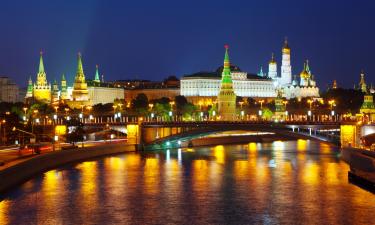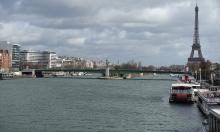At least 20 killed during test run of nuclear-powered submarine
Russia's navy says the nuclear-powered submarine involved in an accident in the Sea of Japan that killed at least 20 people has returned to its base.

Navy spokesman Capt. Igor Dygalo says the submarine is not damaged and reached its home base Sunday off Russia's Pacific Coast under its own power. State-run television says it was returning to a base at Bolshoi Kamen, near Vladivostok.
An accident aboard a Russian nuclear-powered submarine making a test run in the Sea of Japan killed at least 20 people, officials said Sunday.
The nuclear reactor aboard the submarine was operating normally and radiation levels were normal after the accident Saturday, Russian navy spokesman Capt. Igor Dygalo said.
The accident occurred when a fire-extinguishing system went into operation in error aboard the submarine, Dygalo and other officials said. The system is designed to release Freon coolant when activated, according to the ITAR-Tass news agency, which cited an official with Russia's top investigative agency.
It was unclear what activated the fire-extinguishing system.
The official, Sergei Markin, said 14 civilians and six sailors were killed and 22 others were hospitalized after being evacuated to a destroyer that brought them to the Pacific port of Vladivostok, ITAR-Tass reported.
Earlier, Dygalo said more than 20 people were killed, including sailors and workers from the shipyard that built the submarine, and that 21 were injured and hospitalized. He said there were 208 people aboard, including 81 servicemen. Officials did not reveal the name of the submarine.
It was Russia's worst naval accident since torpedo explosions sank another nuclear-powered submarine, the Kursk, in the Barents Sea in 2000, killing all 118 seamen aboard. In 2003, 11 people died when a submarine that was being taken out of service also sank in the Barents Sea.
Saturday's accident came as the Kremlin flexes its military muscle and seeks to restore Russia's naval reach, part of a drive to show off the nuclear-armed country's clout amid strained ties with the West. A naval squadron is headed to Venezuela for joint exercises this month in a show of force near U.S. waters.
Dygalo said the casualties resulted from the "unsanctioned activation" of the firefighting system in the two sections of the submarine closest to the bow, and that the nuclear reactor that powers it was not threatened.
The submarine was not damaged and was heading back toward shore on its own power, escorted by a rescue vessel, Dygalo said.
Markin said authorities have opened an investigation into violations of rules for operating military vessels, suggesting human error was likely involved.
The state-run RIA-Novosti news agency cited an unnamed official at the Amur Shipbuilding Factory as saying the sub was built there and is called the Nerpa. Testing on the submarine began last month and it submerged for the first time last week, according to the agency.
Construction of the Nerpa, an Akula II class attack submarine, started in 1991 but was suspended for years because of a shortage of funding, RIA-Novosti reported.
Despite a major boost in military spending during Vladimir Putin's eight years as president, Russia's military is still hampered by decrepit infrastructure, aging weapons ad problems with corruption and incompetence.
First Deputy Defense Minister Alexander Kolmakov and navy chief Adm. Vladimir Vysotsky were heading for the Pacific Coast in the wake of the accident, Dygalo said.
The Kremlin said President Dmitry Medvedev had been informed about the accident immediately by his defense minister and was receiving frequent updates, Russian news agencies reported. Medvedev ordered a thorough investigation.
Putin, now prime minister, was criticized for his slow response to the Kursk disaster, which marred the first of his eight years as president.
Subscribe to Pravda.Ru Telegram channel, Facebook, RSS!





